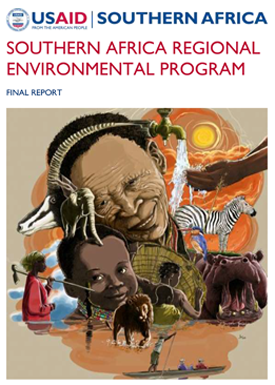In southern Africa, where many people live with little access to clean water and sanitation services, new resource management and conservation efforts made a big difference.

Final Report: Southern African Regional Environmental Program .
Project Report | December 17, 2016

USAID’s Southern African Regional Environmental Program worked with partners and stakeholders related to the Okavango River Basin, to forge relationships that allowed a large portion of the people of the basin to have better lives, now and in the future.
Between June 26, 2010, and December 17, 2016, Chemonics International implemented the Southern African Regional Environmental Program (SAREP) and provided technical support to the Permanent Okavango River Basin Water Commission to enable it to meet elements of the objectives in its strategic action plan (SAP), while responding to other related needs in areas adjacent to the basin. From the onset, SAREP sought to integrate its activities with the SAP, which in mid-2010 had only just begun to be formulated. SAREP supported this formulation by funding development of national action plans (NAPs) by each of the three riparian states — Angola, Botswana, and Namibia — which guided SAREP’s prioritization of areas of support to each country while integrating these activities into the broader SAP. Based in Gaborone, Botswana, the program operated from satellite offices in each of the three riparian countries: Maun in northern Botswana, Rundu in northeast Namibia, and Menongue in southeast Angola.
